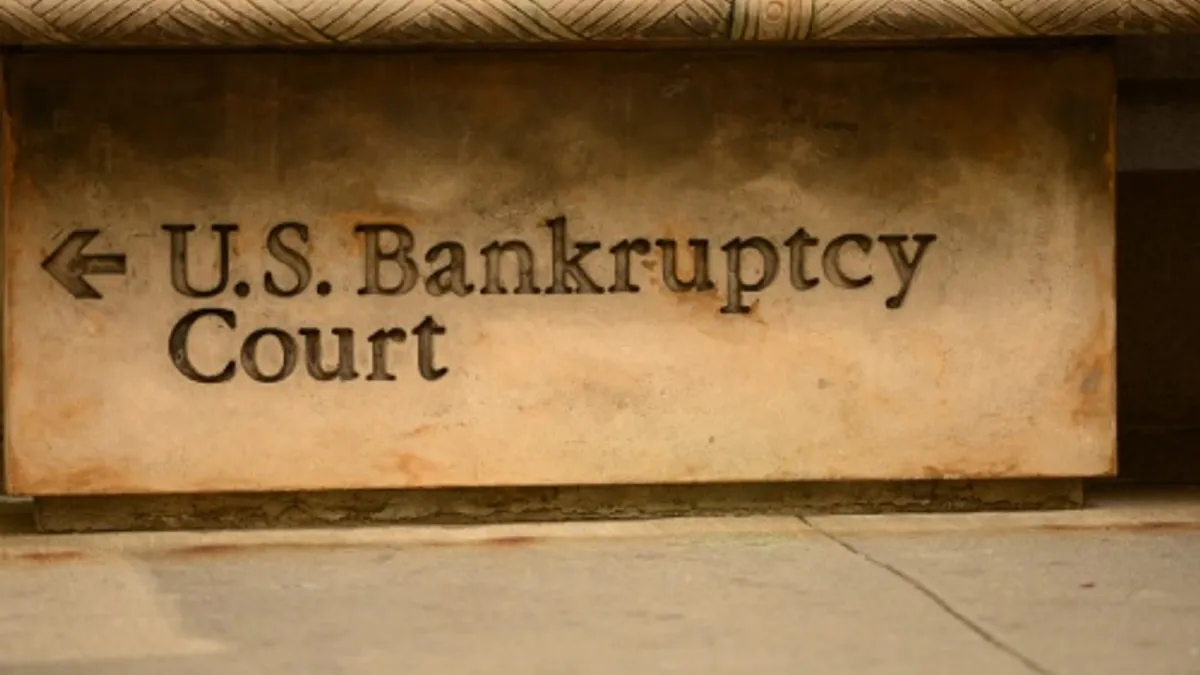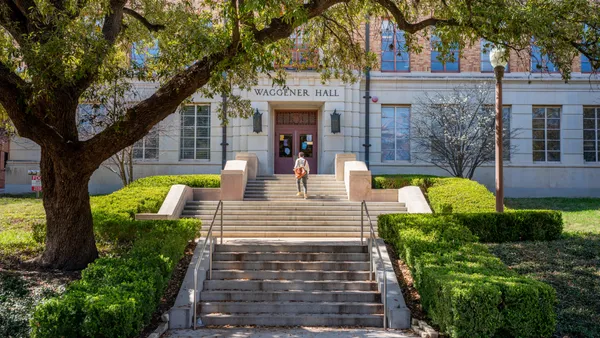The second day of SXSWedu kicked off with a keynote from Temple University Professor of Higher Education Policy & Sociology Sara Goldrick-Rab, whose research focuses on the growing problem around college affordability.
Also the founder of the Wisconsin HOPE Lab, Goldrick-Rab began her presentation by discussing a study undertaken by her team over the course of several years. She told the story of Chloe, a community college student, who told Goldrick-Rab that she went to college because she wanted a decent job — essentially, stability. Another student, Ian, was motivated by a desire to do right by his mother and support her, while another student was focused on not having to depend on other people like her mother.
These stories are important, she said, because they demonstrate that decisions to go to college aren’t always all about the people who are going, and that the reasons people go to college shape the way we think about the price of college. According to statistics cited by Goldrick-Rab, 74% of high school freshmen plan to go to college, but just 51% of those who graduate high school ever make it to college — and only 40% will get a degree of any kind within 6 years. The rise in the cost of college and resulting student debt crisis has resulted in the remaining 60% that leave without a degree saddled with a significant “parting gift.”
But the financial aid system, she said, is broken.
Her team undertook a six-year study of 3,000 Pell Grant recipients, following their classes, their grades, their financial aid, their jobs and their lives. They asked how much sleep they get, how they were eating, how they spent their money on family and other things and more. What they found is that the economics of college in the U.S. have changed, and while the federal Pell Grant is supposed to make college affordable, it doesn’t pay like it used to. While expenses for the grants rose between 1974 and 2013, the average and maximum amounts of grants remained flat and its purchasing power at public institutions declined.
For more details on her team’s research, check out the book “Paying the Price: College Costs, Financial Aid, and the Betrayal of the American Dream.”
Are librarians the future?
A Tuesday afternoon panel titled “Future Ready Librarians - They’re Out There” saw Vancouver Public Schools Director or Innovation & Libraries Mark Ray, Digital Promise President/CEO Karen Cator, DC Public Schools Director of Library Programs Jennifer Boudrye, and Parkway School District Innovation Coordinator Bill Bass tackle the importance of librarians’ roles in school.
The panel began with only Ray behind the table at the front of the room, later revealing that his fellow panelists had been hiding among the audience during the opening crowd discussions, later to have their identities revealed as they joined the panel table.
Throughout the session, one thing was clear: Librarians will remain important to school success as resources increasingly go digital, as librarians help people find information and show them how to leverage it, contextualize it and think critically about it regardless of its medium. For example, as topics such as “fake news” become an increasing concern, librarians will also become more crucial as facilitators of skills around digital citizenship. But at their most basic level, librarians will continue to be needed as connectors of information, ideas, resources and people.
Higher ed community partnerships can boost K-12 outcomes, college readiness
At the JW Marriott, blocks away from the heart of the conference, a panel including Knowledgeworks Foundation VP Byron White, Wagner College President Richard Guarasci, Port Richmond High School Principal Timothy Gannon and Rutgers University-Camden Associate Chancellor for Civic Engagement Nyeema Watson discussed the role higher ed can play in lifting up K-12.
A number of communities nationwide face factors including high levels of inequality, racial hierarchy, lost access and low high school graduation rates. While discussion focused on partnerships such as those between Wagner College and Port Richmond High School, or between Rutgers and the city of Camden, communities nationwide can still shirk the status quo with similar efforts to engage higher ed institutions and students in helping increase access to underserved populations.
For a closer look at this panel discussion, keep an eye out as we continue rolling out coverage in the coming days.
CatchOn launches public beta of ed tech accountability platform
- CatchOn announced on Tuesday the launch of a public beta for a platform that provides administrators with analytics around what ed tech apps are being used, how often and where.
- According to a press release, the app management and reporting platform is designed to help inform investment and implementation decisions, comparing budget percentages against use across a district.
- The app also uses student and teacher usage data to make recommendations on new apps to consider.
Brainly enters machine learning space, adds Oldfield to management team
- Brainly entered 2017 with a reported 162% year-over-year growth in student users in January, and with its $15 million Naspers investment and Rutgers University partnership, it now has its sights set on personalized learning and user experience optimization.
- The new product development efforts are focused on connecting the platform’s global user based with material geared to their specific individual needs and improve their learning experience, according to a press release.
- Brainly has also brought Trulia, Zillow Group and Justworks veteran Eric Oldfield onboard as U.S. market general manager and chief business officer.
Better Weekdays’ freshly launched The Whether aims to improve campus hiring process
- Just days after launching, Better Weekdays’ The Whether platform — billed as the “first-ever inbound recruiting platform for campus hiring” — was on display at SXSWedu and participating as a finalist in the show’s launch competition.
- According to a press release, the app is intended to connect college students to regional employment opportunities by providing easy-to-use tools to recruiters, career advisors, job seekers and business networks.
- The app was initially centered on the St. Louis area, and its partnerships with the St. Louis Regional Chamber of Commerce, the Regional Business Council and the St. Louis Partnership for Economic Development will likely provide the model for expansion in other cities.





















